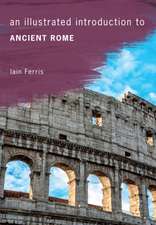History of the Byzantine and Greek Empires from MLVII to MCCCCLIII
Autor George Finlayen Limba Engleză Paperback
Preț: 189.00 lei
Nou
Puncte Express: 284
Preț estimativ în valută:
36.16€ • 37.86$ • 29.92£
36.16€ • 37.86$ • 29.92£
Carte disponibilă
Livrare economică 17-31 martie
Preluare comenzi: 021 569.72.76
Specificații
ISBN-13: 9781541040267
ISBN-10: 1541040260
Pagini: 682
Dimensiuni: 152 x 229 x 35 mm
Greutate: 0.9 kg
ISBN-10: 1541040260
Pagini: 682
Dimensiuni: 152 x 229 x 35 mm
Greutate: 0.9 kg










